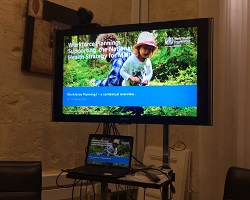Preparing Malta’s future health workforce: forecasting and planning

WHO
The importance of forecasting and planning for health-workforce needs was brought to the forefront at a recent workshop, which took place in Valletta, Malta, on 18–20 February 2020, jointly organized by the Ministry for Health of Malta and the WHO Regional Office for Europe.
Health-care workforce systems are facing new challenges. Coupled with the combined effects of the increasing global movement of health-care professionals and gaps in the healthcare workforce, this raises the need for improved systems of forecasting and planning.
Highlights of the workshop
Discussions focused on Malta’s short- and long-term health workforce planning models with an initial emphasis on nurses, allied health professionals and medical doctors. These categories were identified since they are the largest within the health-care system and front liners of the system locally. It was highlighted that health-care workforce planning at the local level is subject to national budgetary constraints and, therefore, current human-resources planning is limited to a 3-year timeframe.
The importance of long-term planning in a bid to include future service demands and changes in practice (for example, the introduction of new technologies, such as artificial intelligence) was emphasized.
Other topics affecting long-term planning included the following:
Employees of tomorrow
- The area of health economics is failing to attract new professionals because promotion of the related profession starts too late. Students should be targeted with information about health economics long before they enter high school, as is the case in Malta’s nursing sector where nurses visit primary schools to promote their profession.
Retaining the labour supply
- It is about 10 times more costly to recruit and train a new worker than to retain one! Developing policies aimed at mitigating losses of health-care workers is more expedient and reaps faster results than increasing the recruitment of health-care workers. While these paths can be followed simultaneously, the former should have priority.
Mental health at the workplace:
- Promoting mental health through programmes that provide employee support (physical and psychological) in a bid to help reduce absenteeism and increase productivity, benefits not only the workforce but also the workplace.
Workload indicator for staffing needs (WISN)
- WISN helps determine how many health workers are required to cope with the actual workload in a given facility. The tool could strengthen Malta’s health workforce forecasting and planning capacities.
Identifying key stakeholders
- A brainstorming exercise to identify key stakeholders that should be involved in carrying out a robust baseline needs assessment of the local health-care workforce resulted in the construction of a stakeholder analysis matrix.
The participants agreed that a more robust understanding of the precise human-resources requirements was needed, with a focus on quality of work.
Sustained commitment
The workshop was a follow-up to the health-workforce planning and forecasting consultation, which the Ministry for Health of Malta and the WHO Regional Office for Europe organized for relevant stakeholders in Valletta in November 2019. Other similar initiatives will be organized as part of a 2-year capability and capacity-building planning exercise (2021–2023).
One of the immediate objectives of this planning exercise is to further validate the models developed for health-workforce planning and implement them. This will help create and sustain a competent and adaptive health workforce, which in turn will lead to better service planning within the public health sector in Malta.



